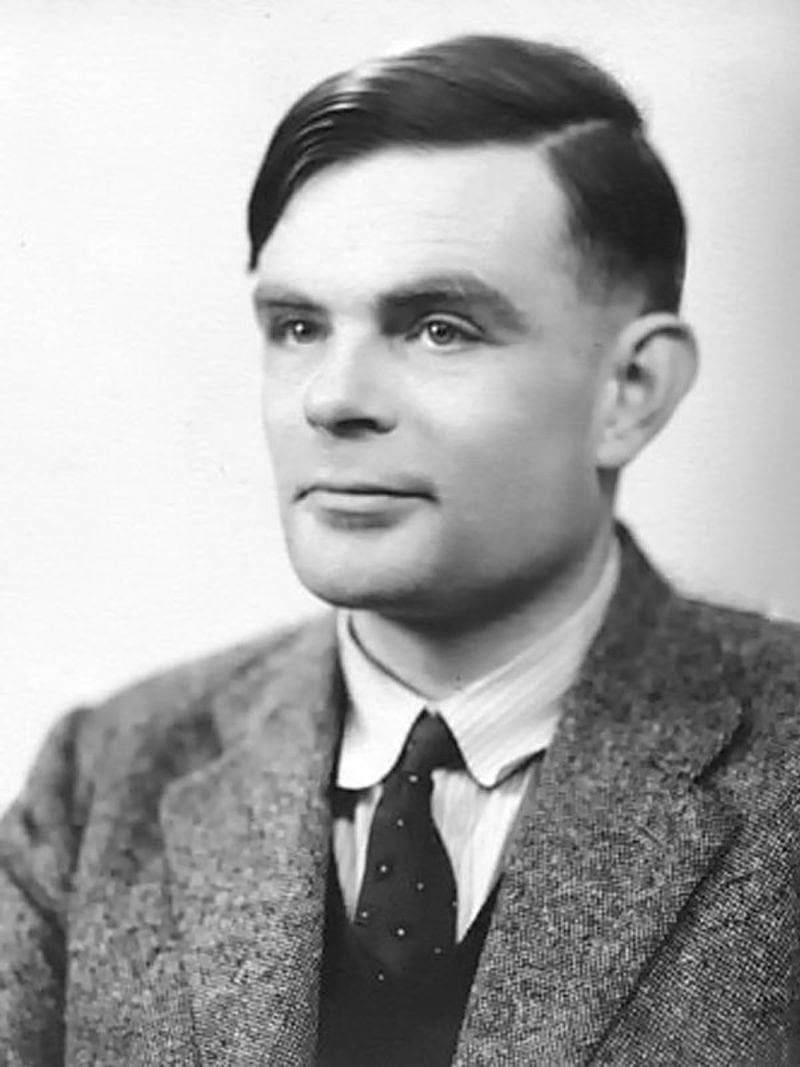Engagement
In 1941, Turing proposed marriage to Hut 8 colleague Joan Clarke, a fellow mathematician and cryptanalyst, but their engagement was short-lived. After admitting his homosexuality to his fiancée, who was reportedly "unfazed" by the revelation, Turing decided that he could not go through with the marriage.\162])
Homosexuality and indecency conviction
In December 1951, Turing met Arnold Murray, a 19-year-old unemployed man. Turing was walking along Manchester's Oxford Road when he met Murray just outside the Regal Cinema and invited him to lunch. The two agreed to meet again and in January 1952 began an intimate relationship.\163]) On 23 January, Turing's house in Wilmslow was burgled. Murray told Turing that he and the burglar were acquainted, and Turing reported the crime to the police. During the investigation, he acknowledged a sexual relationship with Murray. Homosexual acts were criminal offences in the United Kingdom at that time,\164]) and both men were charged with "gross indecency" under Section 11 of the Criminal Law Amendment Act 1885.\165]) Initial committal proceedings for the trial were held on 27 February during which Turing's solicitor "reserved his defence", i.e., did not argue or provide evidence against the allegations. The proceedings were held at the Sessions House in Knutsford.\166])
Turing was later convinced by the advice of his brother and his own solicitor, and he entered a plea of guilty.\167]) The case, Regina v. Turing and Murray, was brought to trial on 31 March 1952.\168]) Turing was convicted and given a choice between imprisonment and probation. His probation would be conditional on his agreement to undergo hormonal physical changes designed to reduce libido, known as "chemical castration".\169]) He accepted the option of injections of what was then called stilboestrol (now known as diethylstilbestrol or DES), a synthetic oestrogen; this feminization of his body was continued for the course of one year. The treatment rendered Turing impotent and caused breast tissue to form.\170]) In a letter, Turing wrote that "no doubt I shall emerge from it all a different man, but quite who I've not found out".\171])\172]) Murray was given a conditional discharge.\173])
Turing's conviction led to the removal of his security clearance and barred him from continuing with his cryptographic consultancy for the Government Communications Headquarters (GCHQ), the British signals intelligence agency that had evolved from GC&CS in 1946, though he kept his academic post. His trial took place only months after the defection to the Soviet Union of Guy Burgess and Donald Maclean), in summer 1951, after which the Foreign Office started to consider anyone known to be homosexual as a potential security risk.\174])
Turing was denied entry into the United States after his conviction in 1952, but was free to visit other European countries.\175]) In the summer of 1952 he visited Norway which was more tolerant of homosexuals. Among the various men he met there was one named Kjell Carlson. Kjell intended to visit Turing in the UK but the authorities intercepted Kjell's postcard detailing his travel arrangements and were able to intercept and deport him before the two could meet.\176]) It was also during this time that Turing started consulting a psychiatrist, Dr Franz Greenbaum, with whom he got on well and who subsequently became a family friend.\176])\177])
Death
On 8 June 1954, at his house at 43 Adlington Road, Wilmslow, Turing's housekeeper found him dead.\178]) A post mortem was held that evening, which determined that he had died the previous day at age 41 with cyanide poisoning cited as the cause of death.\179])\180]) When his body was discovered, an apple lay half-eaten beside his bed, and although the apple was not tested for cyanide,\181]) it was speculated that this was the means by which Turing had consumed a fatal dose.




